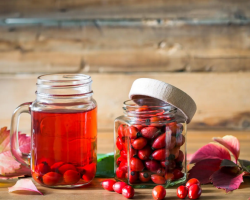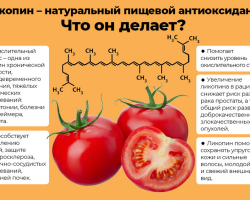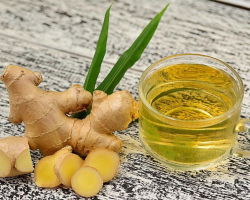Coconut oil and palm are different foods that differ in taste, appearance. Read more in the article.
Content
- Vegetable coconut: is it palm oil?
- Coconut and palm oil is the same?
- Palm and coconut oil - the difference: how is it?
- How to distinguish coconut oil from palm trees by obtaining: Stages of production
- The difference between them in appearance and smell
- By chemical composition: Coconut oil is better than palm?
- By benefit and harm: coconut oil or palm - which is more harmful, which is better?
- Video: Coconut oil for food: benefit and harm. Is it true that this is a deadly poison?
- By use: What is the difference between coconut and palm oil?
- A mixture of palm and coconut oil: where is it used?
- What looks like coconut and palm oil?
- What kind of oil when to choose?
- Video: Coconut oil. Benefits or harm?
- Video: Coconut oil - superfluid or pure poison?
- Video: The Secret of Palm oil - Dr. Komarovsky
There is a widespread opinion that palm and coconut oils are the same product, because they are mined from palm fruits. It's a delusion. In fact, these types of oils are extracted from the fruits of completely different plants.
Read on our website another article on the topic: "Ghee grated butter: what is it, properties and use, how to do it?". You will find out why the ghee of Ghee is the most useful.
At one time, palm oil has gained immense popularity due to the cheapness of its production processes. It is also characterized by increased heat resistance and a long shelf life. But is it so useful? What is the difference between coconut and palm oil? Look for answers to these and other questions below. Read further.
Vegetable coconut: is it palm oil?
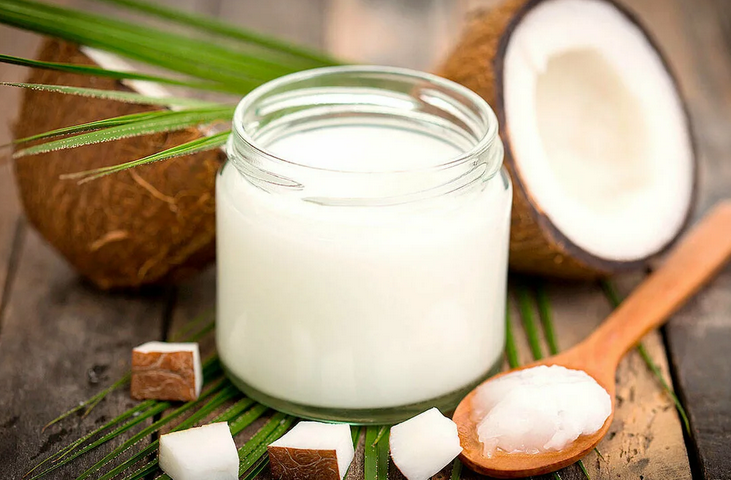
Vegetable coconut and palm oils are completely different products that have nothing to do with each other. Palm oil is extracted from the pulp of the fruit of the oil palm, and the coconut from the fetus of the coconut palm. The birthplace of palm oil is traditionally considered Malaysia and Africa, and coconut - Thailand and Philippines. The methods of oil production also have nothing to do.
Coconut and palm oil is the same?
Despite the fact that the coconut tree is also a palm tree, these are completely different plants, these are not the same thing. Therefore, oils extracted from these trees are different products, with different properties.
Palm oil In turn, it has become one of the most common components in the food industry.
- Due to its properties, palm oil is the most popular grown vegetable oil on the planet.
- But this product cannot be called useful.
- Various consumer rights protection societies and doctors warn about the serious harm of palm oil, which is already contained in more than half of the semi -finished products produced on the planet.
- The main harm of palm oil is that after processing in it a large number of carcinogenic substances are formed.
Good coconut oil Gone from coconut pulp, cold pressingwhich excludes the use of any chemicals, heating or dilution with other oils.
- The main advantage of coconut oil mined in this way is the increased content of lauric acid.
Thanks to this substance, the oil is very well absorbed by the human body and is processed without problems with the liver.
High -quality coconut oil You can buy on site iherb. On this resource there is an opportunity to buy a good and useful product that you can use for different purposes. Here section with natural high -quality coconut oil - Choose and buy!
Palm and coconut oil - the difference: how is it?
As already written above: palm and coconut oil are completely different products. A squeezing of palm oil is produced from oilseed palm trees, and coconut oil made of coconuts. What is the difference?
- At 25 ° C. and higher, coconut oil It will be liquid and transparent, but when the temperature decreases instantly it freezes and turns into a white-yellow mass.
- However, temperature differences do not affect the properties of the product.
- Coconut oil is often used in cooking, as well as in cosmetic procedures.
It has a very high cost, so products with its content are very expensive and rare, you can find oil itself much more often on the market.
- Due to the large content of carotenoids, palm oil It has a red tint.
- Unlike coconut oil, it has an unpleasant odor, but when mixed with other products or spices, loses its aroma and borrows someone else's.
- It is because of the ability to change the smell that such a product has become a popular substitute for creamy, in the production of confectionery.
- It is impossible to feel in taste.
Palm oil is cheaper compared to coconut.
On the site iherb You can find natural products with high -quality palm oil. These are different shampoos, other hair care products, as well as soap, sweet bars without sugar, healthy spreads and much more.
How to distinguish coconut oil from palm trees by obtaining: Stages of production
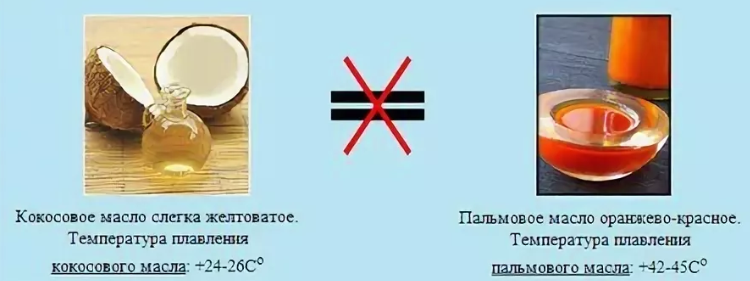
Between palm and coconut oils there are serious differences in the methods of production and production.
- Coconut production and oil production They are very long and laborious processes, which greatly increases the cost of the finished product.
- Source of palm oil production The soft part of the fruits of oilseed palm trees is. The pulp is sent under the press and get useful squeeze. Such production does not need large financial costs, which has a colossal scale. There is also a method of extracting a product from palm seeds, but it is much less profitable.
Coconut oil is extracted from coconuts using spin. In this case, a nut pulp is used. The most expensive, but at the same time retaining valuable substances of the product, is considered the method of cold spin. This method is expensive, therefore it is not widespread.
Stages of production:
Palm oil:
- The collected fruits of the oil palm are sent to the plant, to obtain raw oil, by squeezing.
- To begin with, they are subjected to sterilization and washing, then crushed and boiled.
- When heated, the oil contained in the pulp is melted and separated.
- To allocate a larger amount of product, the boiled fruits are additionally sent under the press.
- All water -soluble impurities are removed from the resulting oil and refined.
Coconut oil:
- This product is obtained in two ways - hot and cold.
- In a hot method, raw materials are dried in the sun or boiled.
- With a cold squeezing method, raw materials are sent under the press, without undergoing heat treatment.
- In this way, only part of the oil contained in the pulp can be obtained, but it will maintain all the benefits.
Below is the difference in the smell and appearance. Read further.
The difference between them in appearance and smell
As you already understood, these are different products. The difference between oils in appearance and smell:
- In a liquid state coconut oil It has a colorless, thick consistency, and when solidified it becomes yellowish or white. Refined coconut oil does not make the smell, and unrefined the smell of split coconut.
- Fresh palm oil It has a reddish color due to the content of carotenoids and makes an unpleasant, pungent smell. After refining, the product loses its smell and acquires a yellowish tint.
Below even more useful information. Read further.
By chemical composition: Coconut oil is better than palm?
The chemical composition of these products is complex. They contain many vitamins and trace elements. By chemical composition - is coconut is better than palm?
- In a refined and unrefined form, coconut oil contains vitamins E and K, choline, zinc and iron. In addition, it is rich in fatty acids, phosphorus and calcium.
- Palm oil is rich vitamin E and carotenoids (these are substances that form vitamin A). It also contains a large number of unsaturated and saturated fatty acids.
Both oils have both useful and harmful properties.
By benefit and harm: coconut oil or palm - which is more harmful, which is better?
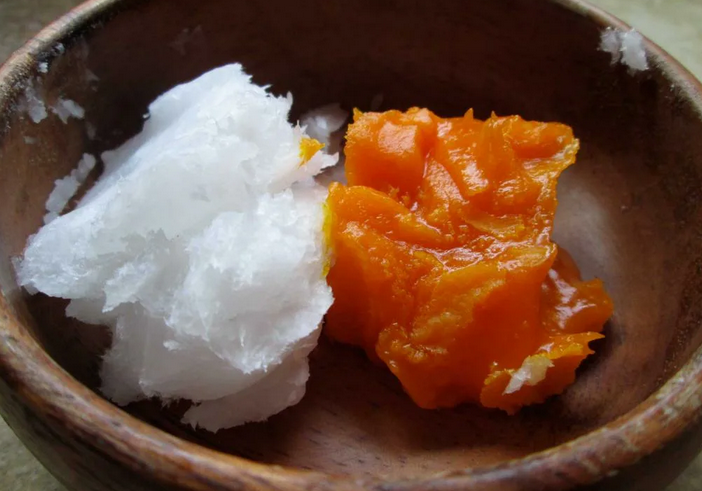
Despite the fact that trans fats are considered useful for the human body, excessive use of such substances is dangerous. The fact is that trans fats have the ability to increase the level of “harmful cholesterol”, which worsens the state of blood vessels and increases the risk of problems in the field of work of the cardiovascular muscle. So, for the benefits and harm: coconut oil or palm - which is more harmful?
- The most harmful and dangerous for the human body are partially hydrogenated oils.
- With this procedure, the most harmful trans fats are formed in the product, which in the future can lead to diabetes and obesity.
- Unfortunately, in recent years, the number of products with the content of harmful trans fats on store shelves is growing. Therefore, going to the store, for shopping, you must carefully read the composition of the purchased products on the packages and choose those products that were made in the most gentle methods.
- However, the moderate use of palm and coconut oils will not only not harm the body, but even can benefit by improving metabolism and increasing the digestibility of vitamins.
- Coconut oil is considered one of the most harmful products, even in comparison with not the most useful palm.
- Both products have a very high calorie content, which is why their excessive use inevitably leads to obesity. On the Internet there is a myth that coconut oil promotes weight loss, but this is not true.
It is worth remembering that both products contain a large amount of saturated fats, which inevitably turn into dangerous trans fats that increase cholesterol and harm the cardiovascular system, in general. Also, excessive use of these oils contributes to the occurrence of diabetes.
Due to low cost, palm oil is cheaper and low-grade. In its production, almost all useful substances are destroyed. The benefits of palm oil are the ability to increase immunity and improve digestion.
Which is better from these products?
Coconut oil:
- It has a strong antibacterial effect.
- It is well absorbed by the body, affecting only a harmful microflora.
- The antioxidants contained in this product are able to slow down the aging of cells and remove toxins.
- However, excessive consumption of coconut oil can increase the risk of cardiovascular diseases.
- This product is a strong allergen. Therefore, it is not recommended for people with allergies.
Palm oil:
- It can make up for a deficiency vitamin E In the body and at the same time it is well absorbed.
- However, during hydrogenization and heat treatment, dangerous trans fats are able to form in this product that increase cholesterol and violate the liver.
Coconut oil is characterized by a more noble origin and useful composition. This product is able to have an antifungal and antiseptic effect.
Video: Coconut oil for food: benefit and harm. Is it true that this is a deadly poison?
By use: What is the difference between coconut and palm oil?
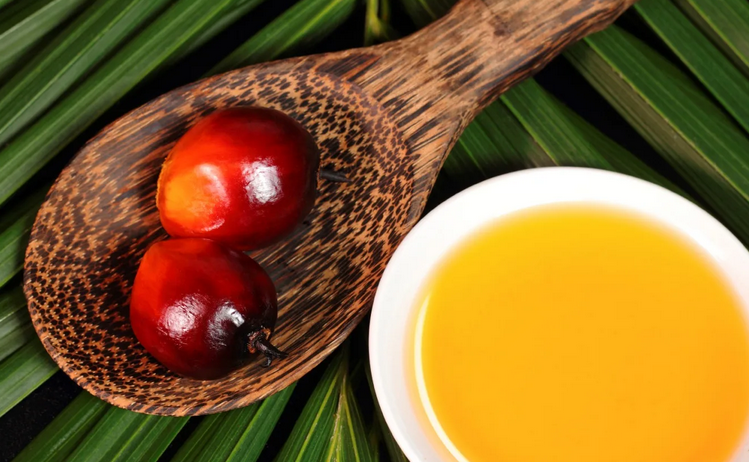
Coconut oil is widely used in cooking, for example, when creating salads, soups and baking, as well as as a substitute for vegetable oil. So, for use, what's the difference between coconut and palm oil?
- Due to the fact that palm oil is cheaper, the scope of its use is much wider.
- Margarine and confectionery fats are made from it, as well as various semi -finished products with a long shelf life, ice cream, muffins, various rolls and the like.
- In addition, it is used as a substitute for cocoa oil and milk fat.
- Well -peeled palm oil is used as a substitute for sunflower and butter, it is added to confectionery and bakery products.
- It is worth noting that in industry, technical palm oil is almost always used, which is forbidden to add to food, in its pure form.
In addition to the culinary industry, palm and coconut oils are used in cosmetology to create hair care products, nails and skin. Due to the fact that coconut oil is very expensive, all cosmetics with its content relate to the premium class. In everyday life, this oil is used as a means for tanning and moisturizing the skin.
Palm oil is often added to cosmetics to stabilize the base. In everyday life, cosmetic masks are made from it for nutrition and moisturizing the skin.
Due to the complexity of technical production, coconut oil is much more expensive. Palm oil is a much cheaper option, even when compared with butter and vegetable oils, so it is very popular in production.
A mixture of palm and coconut oil: where is it used?
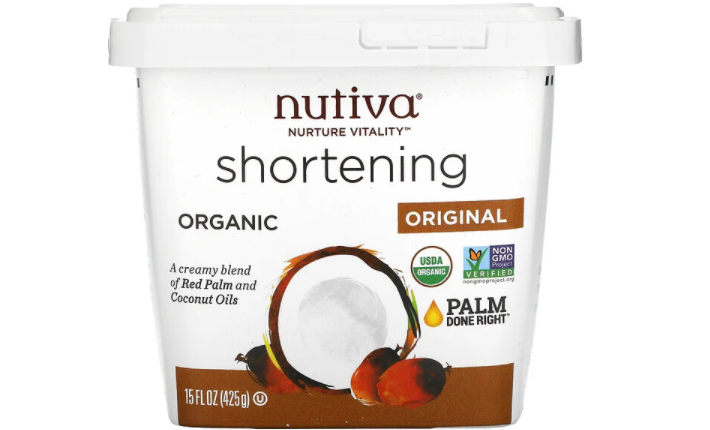
Next, you should talk about the popular mixtures of coconut and red palm oils. You should not confuse red palm oil with ordinary, technical - these are different products.
- Red palm oil is one of the types of palm oils, which is extracted from the fruits of oilseed palm trees with red pulp.
- This type of product is characterized by a high content of carotenoids, which endows it with a reddish tint. This product is characterized by high antioxidant properties.
Studies have shown that the use of red palm oil lowers the risk of heart attack and arterial thrombosis. Where is the mixture of these products used?
- Such a mass has a yellowish color, and is widely used in cooking, as well as when creating mixtures of baby food.
- Such a product does not have an unpleasant odor, like pure palm oil and does not freeze in the refrigerator, unlike pure coconut oil.
Below is still useful and interesting information. Read further.
What looks like coconut and palm oil?
Next, it is necessary to list and detailed all the characteristics and parameters that determine the similar features between coconut and palm oils. This will help to explain and understand the reasons why consumers without realizing the difference, confuse and consider these products the same.
- The main similarity of palm and coconut oils is their tropical origin. In addition, both products are made of wood, palm plants.
- Both oils are oxidized much weaker than plant and creamy, have a long shelf life ( up to 2 years).
- Weak smoke weakly when frying.
- At room temperature, both coconut and palm oil are hardened.
- Both products are actively used in the food industry.
- Palm and coconut oil melt at temperature above 23 degrees and harden at temperature below 20 ° C.
Both products have similar calorie content - approximately 120 kcal On one tablespoon.
What kind of oil when to choose?

So, the harm and benefits of these foods were described above. It is also worth knowing what oil when choosing?
- In cooking, it is better to use coconut oil:
Because it is impossible to find well -peeled palm oil on the market. Such a product can be prescribed by nutritionists for frying. It has a high combustion temperature, so you can fry it. But due to the high cost of this product, doing this is often problematic. But fried foods can not be often consumed.
- When creating food products, technical palm oil is used.
They are considered harmful to health. Therefore, when choosing sweets, one should thoroughly study the composition, and it is better to give preference to other types of oil - natural butter, vegetable, etc.
In the cosmetology industry, palm and coconut oil have no advantages over each other. They are both equally an alternative to other oils.
Video: Coconut oil. Benefits or harm?
Video: Coconut oil - superfluid or pure poison?
Video: The Secret of Palm oil - Dr. Komarovsky
Read on the topic:


